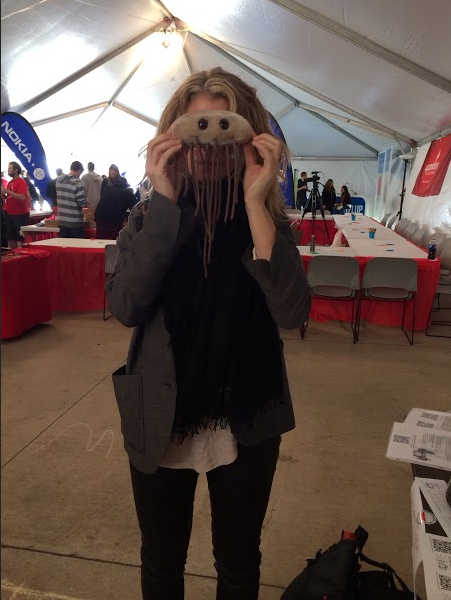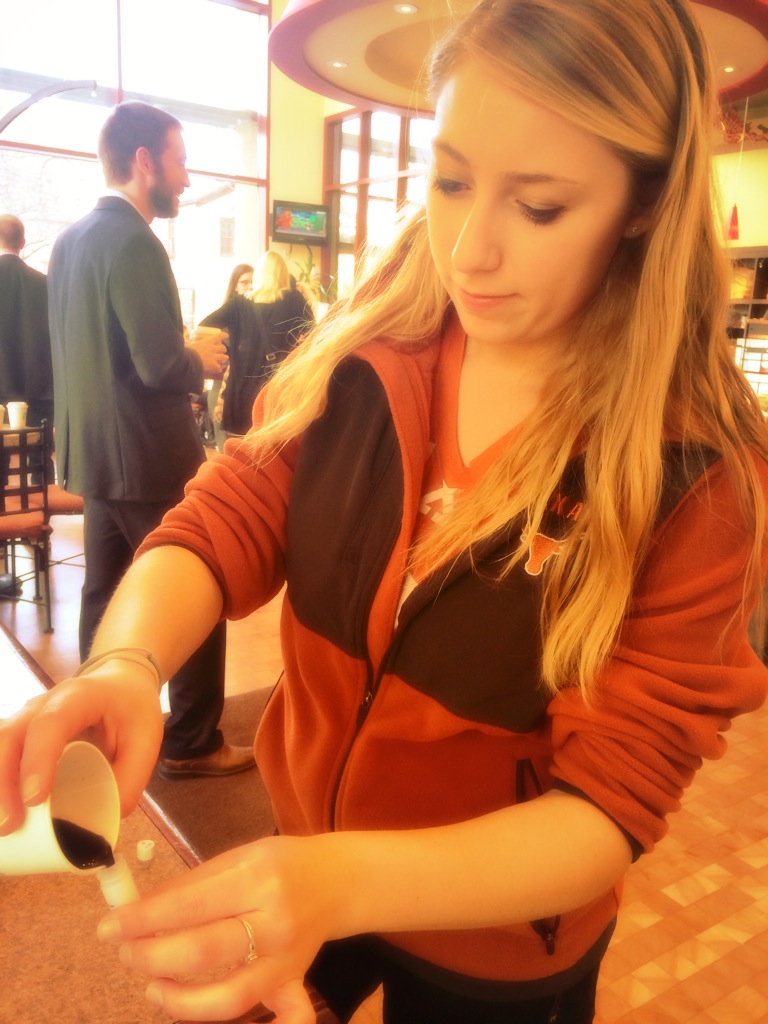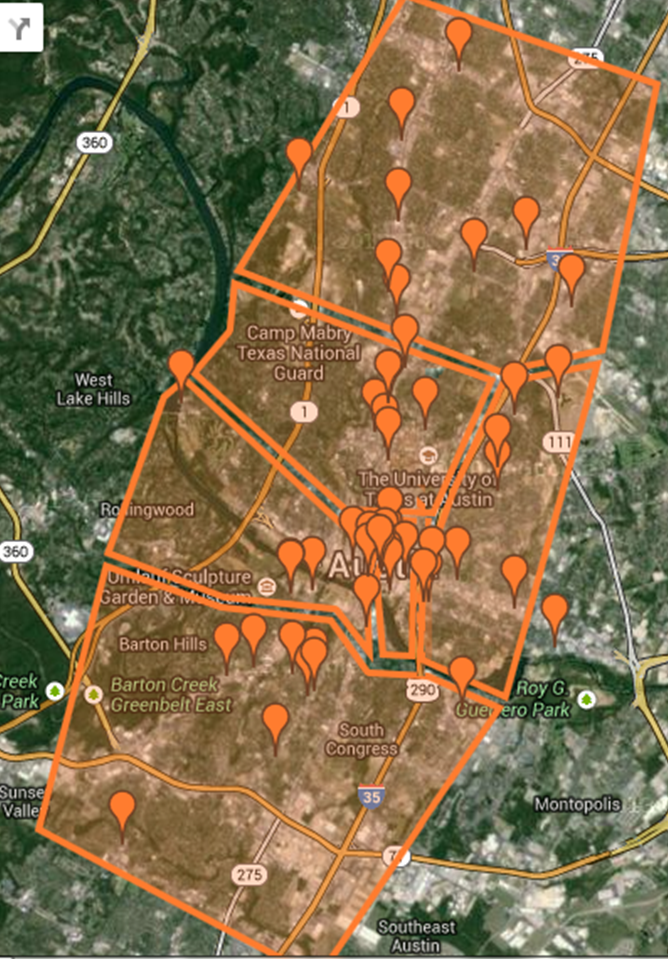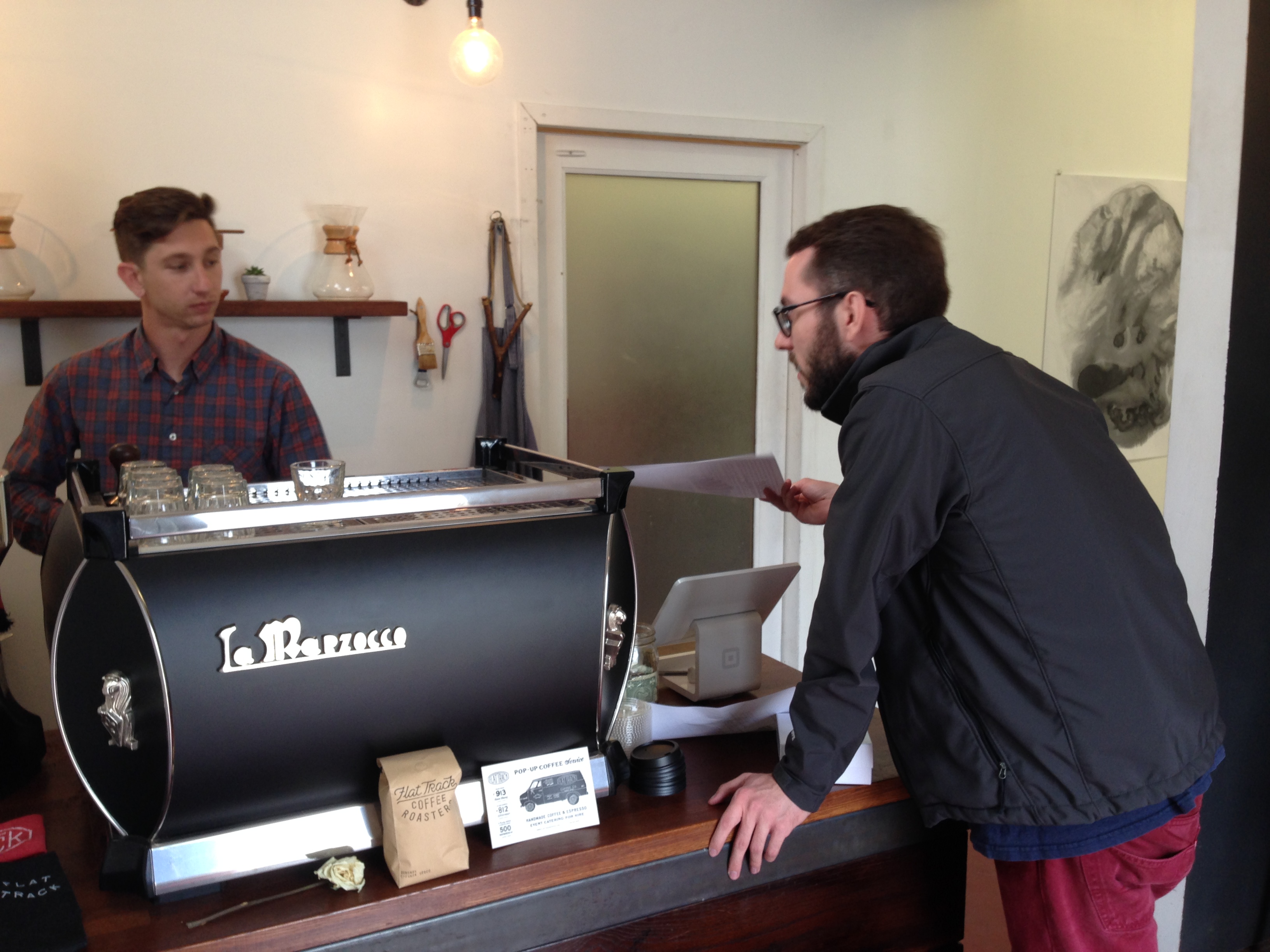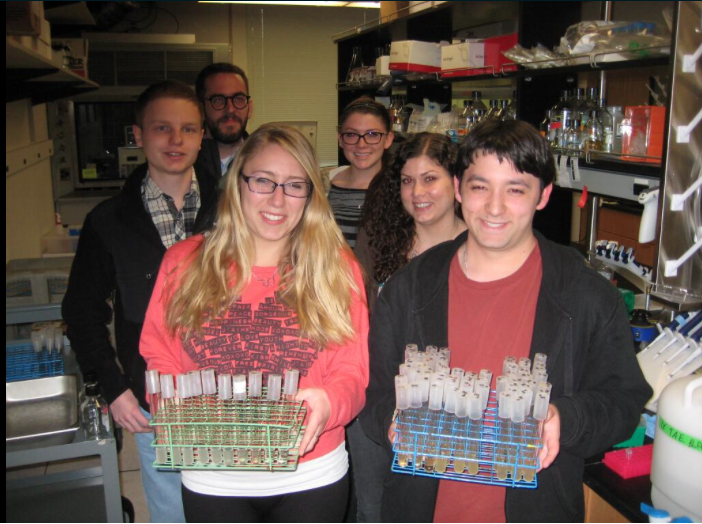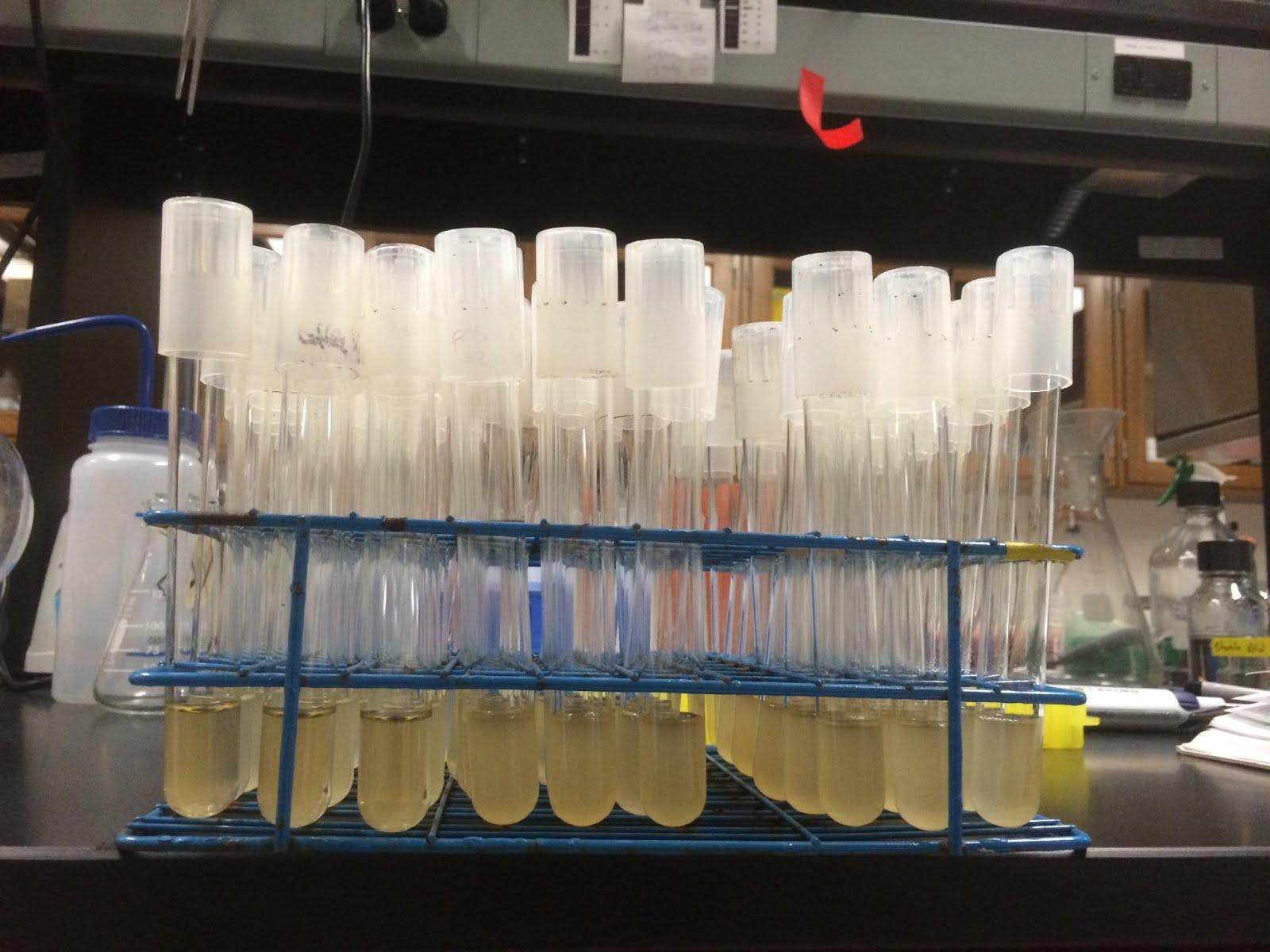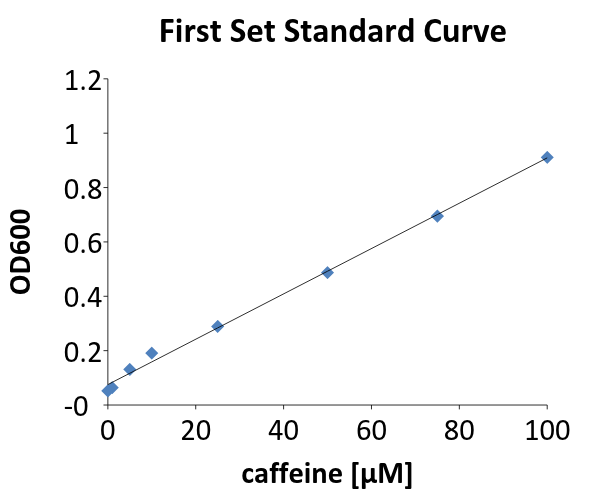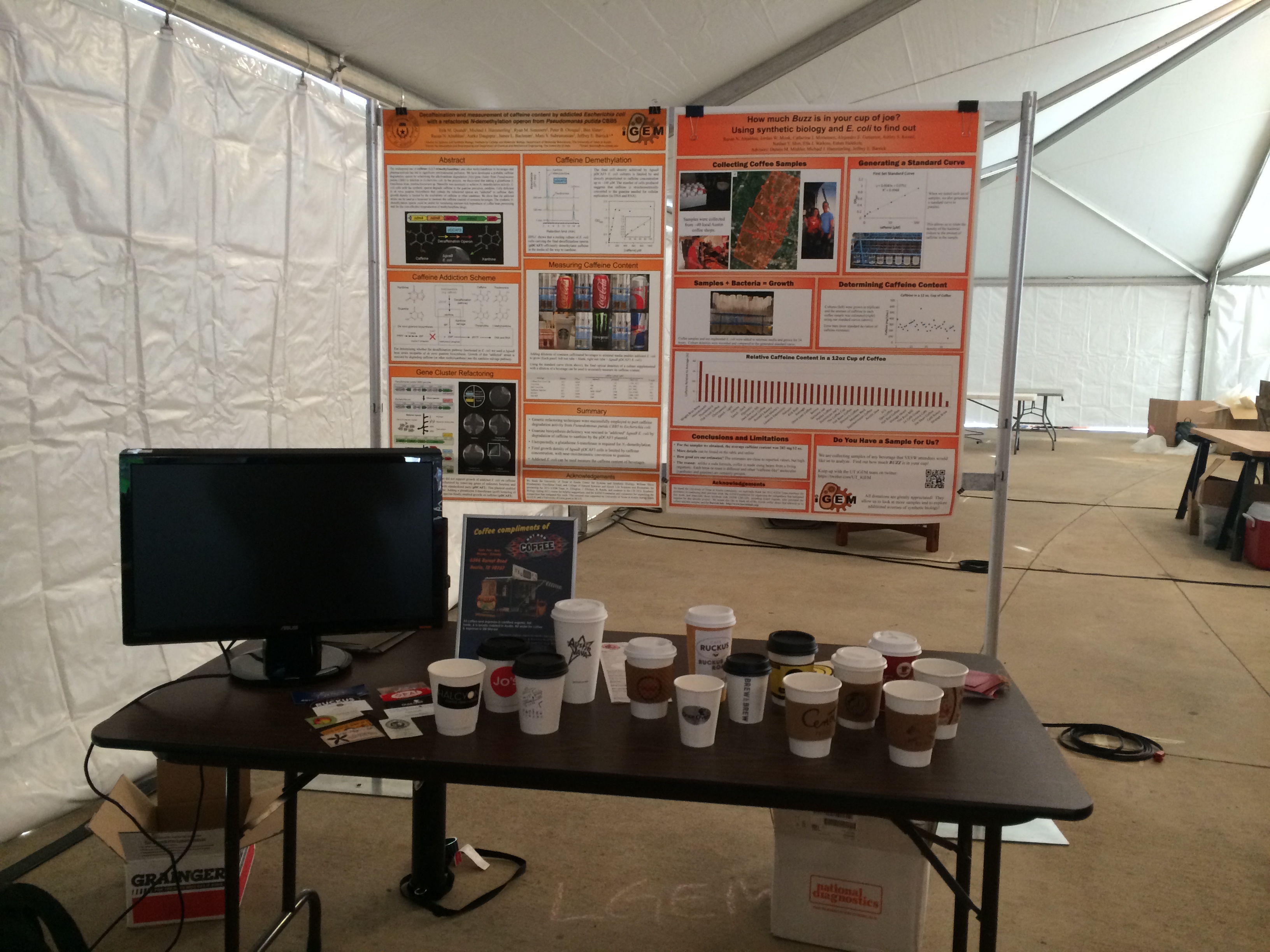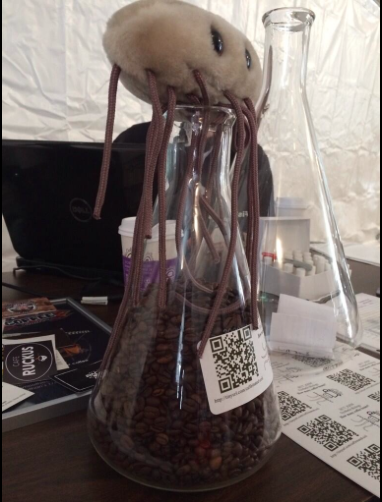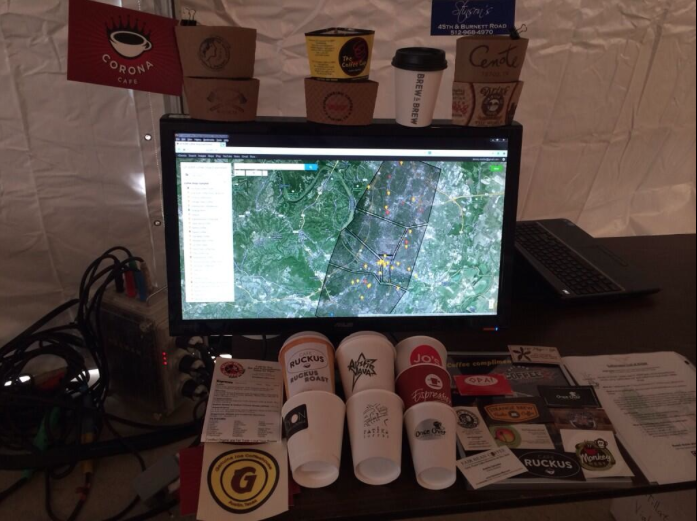Team:Austin Texas/human practices
From 2014.igem.org
| Line 89: | Line 89: | ||
==Caffeinated Coli== | ==Caffeinated Coli== | ||
| - | + | ||
[[file:UT_Austin_Coffee_shops_map.png|200px|thumb|right| [http://www.google.com/maps/d/viewer?mid=zlUDhks6KHxI.ketDvlvg6zis Click here for an interactive map of coffee shops we visited!]]] | [[file:UT_Austin_Coffee_shops_map.png|200px|thumb|right| [http://www.google.com/maps/d/viewer?mid=zlUDhks6KHxI.ketDvlvg6zis Click here for an interactive map of coffee shops we visited!]]] | ||
| - | Previously, the UT Austin iGEM team created and used the caffeinated coli to measure the caffeine content in beverages such as soda and energy drinks. | + | Previously, the UT Austin iGEM team created and used the caffeinated coli to measure the caffeine content in beverages such as soda and energy drinks. The results showed that these engineered ''E. coli'' were very accurate at detecting the levels of caffeine in these formula-based drinks. We wondered how well they would do with something different, something that the vast majority of people in the city of Austin drink on a regular basis, coffee.[[file:Jordantalkscoffee.JPG|thumb|left|200px| Jordan discussing our project with Matt Bolick, co-owner of Flat Track Coffee]] |
The [http://www.ibuyaustin.com Austin Independent Business Alliances'] slogan of [http://www.keepaustinweird.com "Keep Austin Weird,"] is a widely shared sentiment of Austinites, and emphasizes the need to promote local businesses. Thus, we thought it would be a great community outreach project to work with local Austin coffee shops, and do our part to "Keep Austin Weird!" Jordan, a senior member of the group, took charge and assembled a map of about 40 local coffee shops in Austin. The team split up one weekend to visit dozens of coffee shops, collecting samples of their house coffee. We were met with much enthusiasm by the coffee shop owners and employees, whose interest had been piqued when we described our experiment, often resulting in discussions of science, synthetic biology, and coffee. | The [http://www.ibuyaustin.com Austin Independent Business Alliances'] slogan of [http://www.keepaustinweird.com "Keep Austin Weird,"] is a widely shared sentiment of Austinites, and emphasizes the need to promote local businesses. Thus, we thought it would be a great community outreach project to work with local Austin coffee shops, and do our part to "Keep Austin Weird!" Jordan, a senior member of the group, took charge and assembled a map of about 40 local coffee shops in Austin. The team split up one weekend to visit dozens of coffee shops, collecting samples of their house coffee. We were met with much enthusiasm by the coffee shop owners and employees, whose interest had been piqued when we described our experiment, often resulting in discussions of science, synthetic biology, and coffee. | ||
| - | |||
| + | |||
| + | |||
| + | [[file:teamcoffee.png|400px|thumb|left|The beginning of something great! Special thanks to Razan Alnahhas (second row, right) for mentoring and to Mike Hammerling (not pictured) and Ashley Kessel (second row, left) for assistance in sample collection.]] | ||
Back at the lab, the team members got to work. Senior members divided their attention to mentor the new members in the techniques necessary to start cultures, work with the lab equipment, and other general laboratory safety. | Back at the lab, the team members got to work. Senior members divided their attention to mentor the new members in the techniques necessary to start cultures, work with the lab equipment, and other general laboratory safety. | ||
| Line 120: | Line 122: | ||
| - | |||
| + | |||
| + | =Doing the Science= | ||
[[file:UT_Austin_E._coli_coffee_cultures.jpg|250px|thumb|left| Cultures of knockout strain grown with collected coffee samples.]] | [[file:UT_Austin_E._coli_coffee_cultures.jpg|250px|thumb|left| Cultures of knockout strain grown with collected coffee samples.]] | ||
[[file:UT_Austin_caffeine_growth_standard_curve.png|200px|thumb|right| Standard growth curve of knockout strain grown with different amounts of caffeine.]] | [[file:UT_Austin_caffeine_growth_standard_curve.png|200px|thumb|right| Standard growth curve of knockout strain grown with different amounts of caffeine.]] | ||
| - | The ''E. coli'' we used are an engineered strain, previously made by the [https://2012.igem.org/Team:Austin_Texas 2012 UT Austin iGEM team]. This strain has had its normal guanine synthesis pathway knocked out, but contains a plasmid with a set of genes that enables the organism to synthesize guanine from | + | The ''E. coli'' we used are an engineered strain, previously made by the [https://2012.igem.org/Team:Austin_Texas 2012 UT Austin iGEM team]. This strain has had its normal guanine synthesis pathway knocked out, but contains a plasmid with a set of genes that enables the organism to synthesize guanine from a number of xanthines, including caffeine. Without caffeine (or other xanthines), the strain cannot grow. When caffeine is added, the engineered strain can demethylate the caffeine molecules yielding xanthine, and from there the ''E. coli'' can synthesize guanine. The culture then grows normally until the caffeine is completely metabolized, at which point the cells can no longer synthesize guanine, and cease to grow. Thus, by looking at the relative growth of the strain with different samples of coffee and comparing it to a standard curve of growth in solutions with known amounts of caffeine, we could reliably measure the amount of caffeine in the coffee. |
| + | |||
| + | |||
| + | |||
| + | ==Measuring Caffeine Content== | ||
| Line 134: | Line 141: | ||
[[file:UT_Austin_relative_caffeine_levels_coffee_shops.png|1000px|thumb|center| Figure 1. Relative levels of caffeine in house coffee samples from around Austin. Data depict the amount of caffeine in the coffee relative to the average caffeine content for all samples tested, as determined using the caffeinated coli.]] | [[file:UT_Austin_relative_caffeine_levels_coffee_shops.png|1000px|thumb|center| Figure 1. Relative levels of caffeine in house coffee samples from around Austin. Data depict the amount of caffeine in the coffee relative to the average caffeine content for all samples tested, as determined using the caffeinated coli.]] | ||
| + | =Presenting the Science= | ||
| + | In March 2014, we presented this data set at the SXSW festival. As part of this outreach, we explained our project and synthetic biology to a wide range of people. Many people who came by had little to no background in science or technology, and even most of the ones who did did not have a thorough understanding of what synthetic biology was or how it could be helpful. By discussing our experiments with bacteria and coffee, an interesting and easy-to-understand application, we were able to explain the basic concepts of synthetic biology and how it can be used in a beneficial way. Occasionally, these conversations would branch out into wider topics of science and technology. | ||
== SXSW Create == | == SXSW Create == | ||
| - | + | ||
[[file:SXSWcreatetable.JPG|left| 500px| Table at SXSW]] | [[file:SXSWcreatetable.JPG|left| 500px| Table at SXSW]] | ||
| Line 145: | Line 154: | ||
Some people claimed that longer roasting destroyed the caffeine (and swore by cold-press coffee!), some people guessed that perhaps the dark roast sample had less coffee beans in it when it was brewed. Nevertheless, after much research by the team after the event, it was concluded that [http://en.wikipedia.org/wiki/Coffee_roasting coffee roasting] and [http://en.wikipedia.org/wiki/Coffee_preparation#Brewing coffee brewing] are largely variable processes, and caffeine content can vary significantly from batch to batch of beans. For more information about light roast vs. dark roast see this article at [http://www.scribblerscoffee.com/coffees_caffeine.htm Scribblers Coffee], which discusses the nuances between the two! | Some people claimed that longer roasting destroyed the caffeine (and swore by cold-press coffee!), some people guessed that perhaps the dark roast sample had less coffee beans in it when it was brewed. Nevertheless, after much research by the team after the event, it was concluded that [http://en.wikipedia.org/wiki/Coffee_roasting coffee roasting] and [http://en.wikipedia.org/wiki/Coffee_preparation#Brewing coffee brewing] are largely variable processes, and caffeine content can vary significantly from batch to batch of beans. For more information about light roast vs. dark roast see this article at [http://www.scribblerscoffee.com/coffees_caffeine.htm Scribblers Coffee], which discusses the nuances between the two! | ||
| - | |||
| - | |||
| + | |||
| + | ==Community Response== | ||
[[file:e.coliplush.png|thumb|right| Coffee bean counting contest]] | [[file:e.coliplush.png|thumb|right| Coffee bean counting contest]] | ||
| + | People were also extremely curious as to why the Wright Bros. Brew & Brew sample had a significantly higher amount of caffeine. This data point resulted in one of the owners of Wright Bros. Brew & Brew contacting us, to understand our process of determining caffeine content and why they were so far outside the mean. The owner, Matt Wright, concluded, after discussing our project and the coffee brewing process (and consulting with employees), that the specific pot of coffee was probably just not fully drained, i.e. there was less water in the batch than normal, resulting in a higher caffeine/volume content. This was just a starting point though as the conversation with Mr. Wright spanned the entire process of making coffee, quality control, and a little bit of the science behind the process. It also developed a nice contact point for a future continuation of science and coffee. | ||
| + | |||
| + | Similar conversations involving science, synthetic biology, coffee, and the community occurred throughout the entire SXSW event. The various coffee shop owners and baristas were curious if they could employ science to help them make a better drink or a more customizable product. Some of the SXSW attendees were in the coffee-making business and were interested in thinking about whether such science could be used to understand where the caffeine goes during each step in the coffee-making process. And a number of individuals who home brew coffee of kombucha or other organic drinks wondered if we could test their samples to determine the amount of caffeine they have in their beverages. We, of course, said yes! | ||
| + | |||
| + | |||
To involve everyone attending the event and raise more awareness for the iGEM team, we held a contest in which patrons attending the event could enter to win an ''E. coli'' plush upon following us on [https://twitter.com/UT_iGEM Twitter.] | To involve everyone attending the event and raise more awareness for the iGEM team, we held a contest in which patrons attending the event could enter to win an ''E. coli'' plush upon following us on [https://twitter.com/UT_iGEM Twitter.] | ||
| Line 158: | Line 172: | ||
[[file:Closertablesetup.png|center|400px]] | [[file:Closertablesetup.png|center|400px]] | ||
| - | + | Other photos?? | |
Revision as of 16:57, 16 October 2014
| |||||||||||||||||||||||||||||
 "
"

